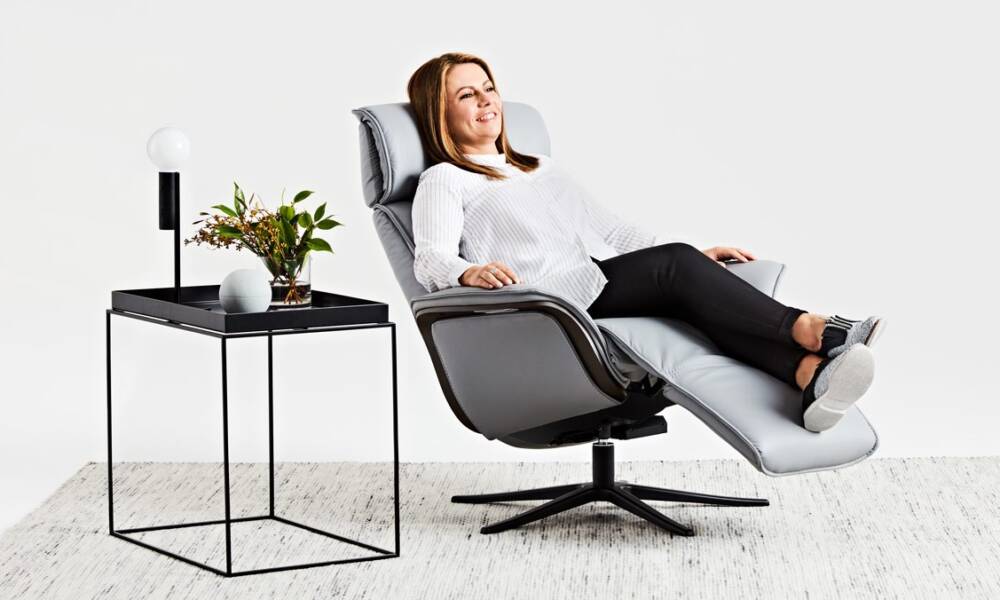Home Improvement
6 Designer Tips for Creating a Minimalist Look in Your Home

Changing your traditional home décor to a more minimalistic design style is not a new concept. While often regarded as an inherently contemporary design style, the idea to clear your home of all the excess items and only keeping a few items has actually been around since the early 1900s.
Typically, a minimalist design approach looks to create a sense of calm and tranquillity by reducing the amount of visual distractions in your living space. While the focus is also on creating a serene environment with as few elements as possible, it doesn’t mean it become impractical. From the electric lift chair you need and love, to still using a much-loved heirloom, you can still make it work.
Minimalist Design Styles are Trendier Than Ever
If you’ve spent the bulk of your life living in a more traditional furniture-filled space, the thought of streamlining your possessions to create a more minimalistic look can be quite challenging. This is especially true since many designers have their own interpretations of what a minimalistic look should be. Fortunately, our team of design experts have compiled a list of the simplest ways to get you started.
1. Declutter
At its core, minimalism involves having fewer possessions which in turn is supposed to simplify your everyday living situation. That said, it makes sense that the first step toward incorporating a minimalistic look is to declutter.
Here our experts recommend being as ruthless as possible with your current possessions. The golden rule is that every item you keep should add value to your life or serve a practical function. That means only keeping items that you use every day or that are part of a streamlined storage solution. For instance, you would keep a table to eat or work on, but you wouldn’t keep tables purely to put trinkets on.
2. Choose the Perfect Colours
The average design style involves a wide variety of colours while in most instances, each room has its own colour and theme. A key element of minimalism is that bright colours should be replaced with more neutral hues. The primary reason for this is that neutral colours make a room look more spacious, calmer and less overwhelming.
A peaceful vibe is a key aspect of the whole minimalistic approach but you don’t want boring, right? Fortunately, if the thought of a white and beige home seems too dull, you can opt to choose muted colours or an overall theme of black and white. Opt for signature elements in pastel colours rather than bright, bold hues.
3. Create More Space
Another important aspect to keep in mind is that you will need to embrace a more spacious design tactic. That means you should clear out as much excess furniture as possible. It also means that every space in your home doesn’t have to be filled with a piece of furniture or a useless ornament.
Keep the items that definitely serve a purpose. This can be a lift chair or a bookcase, based on your habits and household members’ practical or health needs.
Also, furniture should be streamlined and have clean shapes, so they support your design goals.
4. Incorporate More Natural Light
In a minimalistic design, windows and natural light are your best friends. Ideally, you should have sleek window coverings such as blinds rather than bulking curtains. If you’re going to incorporate curtains, opt for lighter and thinner materials. Keep in mind that the idea is to utilise more sunlight and reduce the need for excessive artificial lighting.
5. Opt for Accent Decorations
One of the most challenging aspects of switching to a minimalistic approach is getting rid of the trinkets, ornaments and picture frames that have more than likely filled your rooms for a long time. Fortunately, you don’t have to get rid of all your special items.
Instead of overwhelming your home with a lot of things, consider creating a focal point for a small group of items. For example, instead of having picture frames all over the house, choose a signature spot and create a photo wall. Here you can choose a specific theme or colour of frames to keep the space from looking too overwhelming.
6. Use Textures to Avoid Boredom
To keep your décor minimalistic but still interesting, consider keeping the look current by playing around with different textures. A few top ways to incorporate different textures into your new design, consider the following:
- Add an upholstered headboard in your bedroom.
- Use textured wallpaper on a signature wall such as the photo frame wall.
- Use a light-coloured throw or two scatter cushions on your couch.
- Marble countertops are an effective way to add texture to a streamlined kitchen.
- Add a few plants throughout the house. (Avoid adding more than one in each room)
- Use a functional piece of furniture, such as your electric lift chair or a leather recliner as a focal point and only keep other items the complement their classic look
Final Thoughts
If your goal is to live simpler and neater, then it may be time to embrace a few minimalistic principles. It’s a good idea to start with one space at a time so that you and your family can get used to the new look.
Remember that decluttering in the beginning is the secret to your success. The fewer possessions you have, the more effective your new design efforts will be!
Kenneth is a proud native of sydney, born and raised there. However, he pursued his education abroad and studied in Australia. Kenneth has worked as a journalist for almost a decade, making valuable contributions to prominent publications such as Yahoo News and The Verge. Currently, he serves as a journalist for The Hear Up, where he focuses on covering climate and science news. You can reach Kenneth at bloggerjohnsmith12@gmail.com.